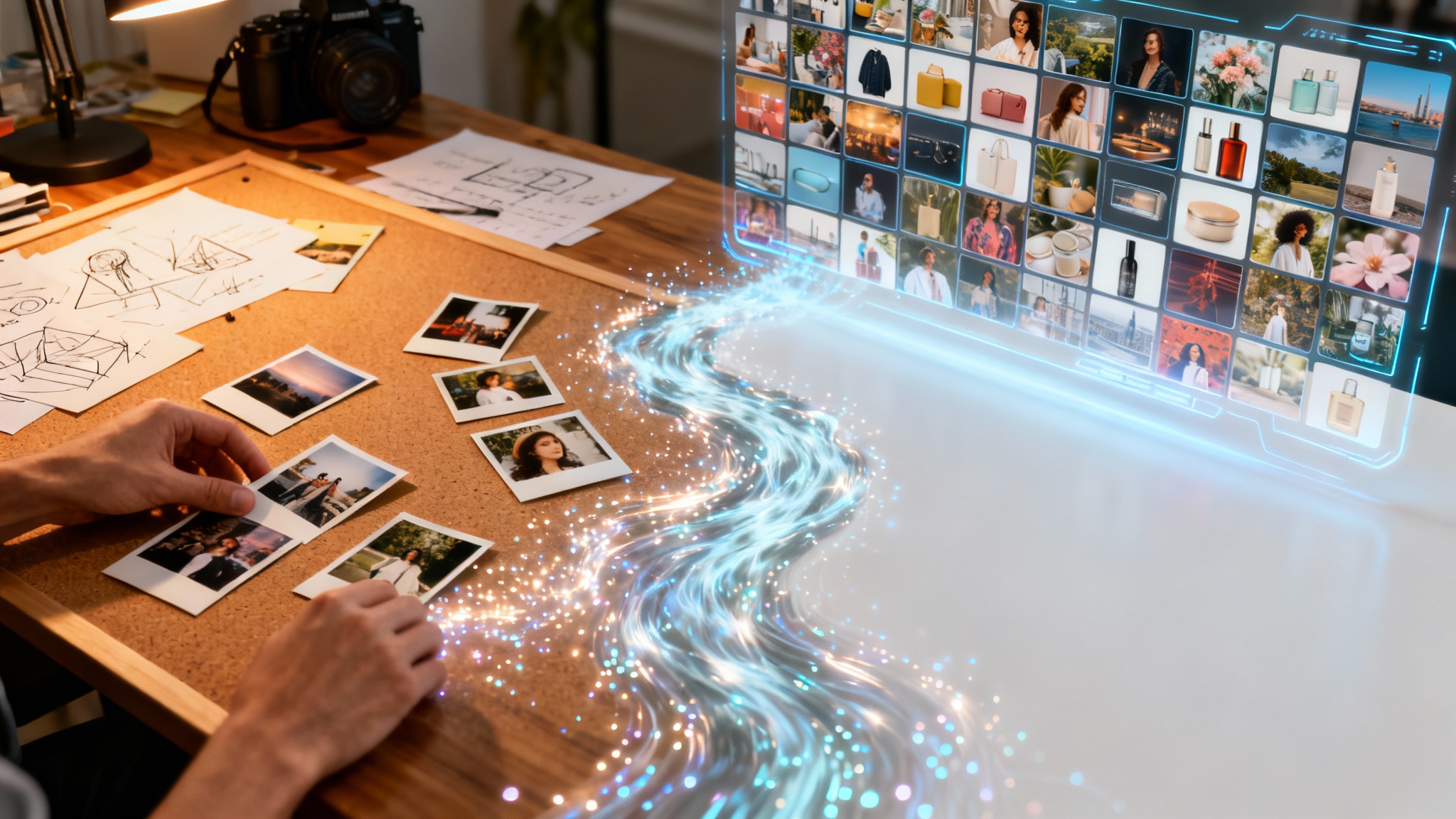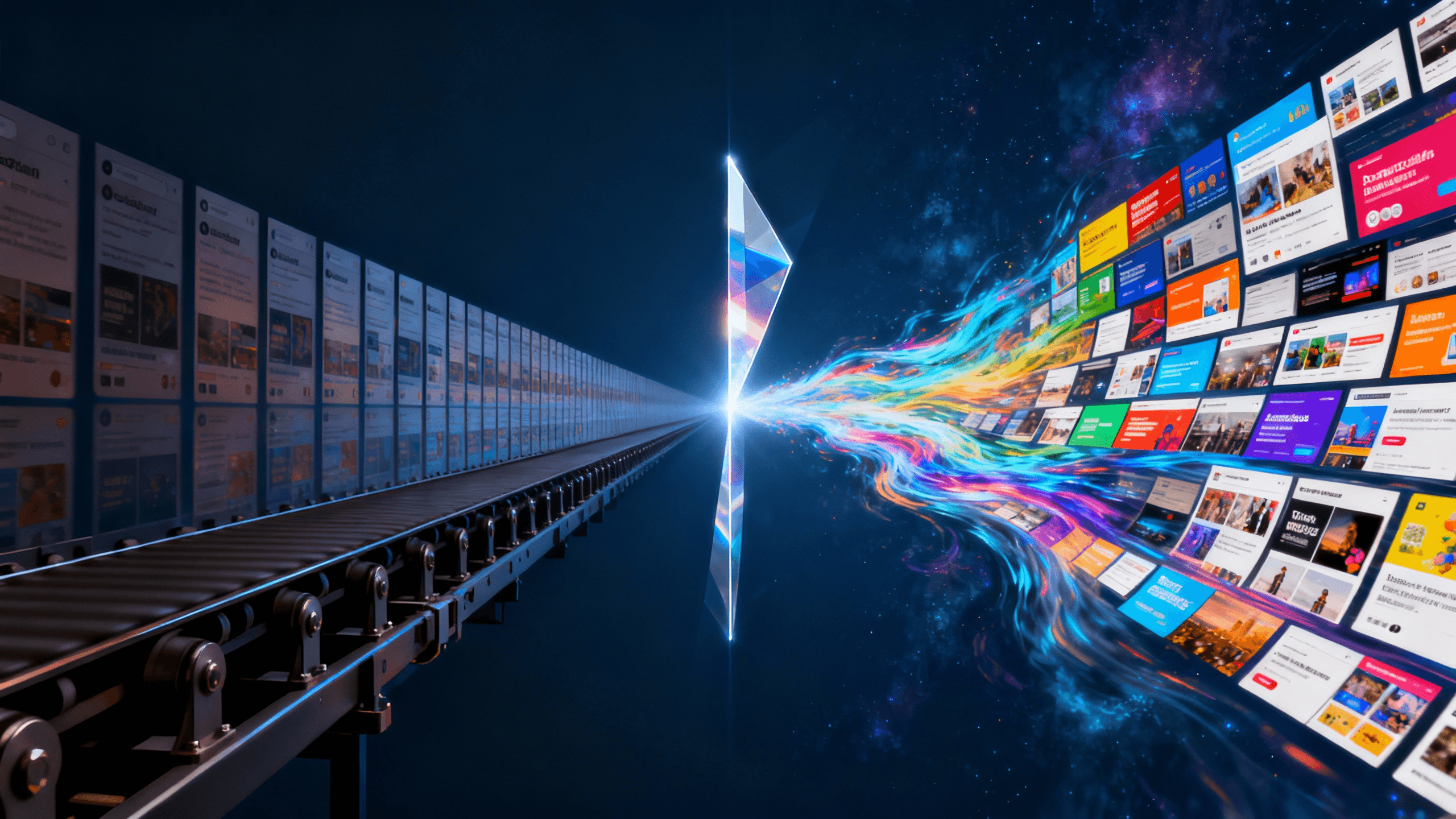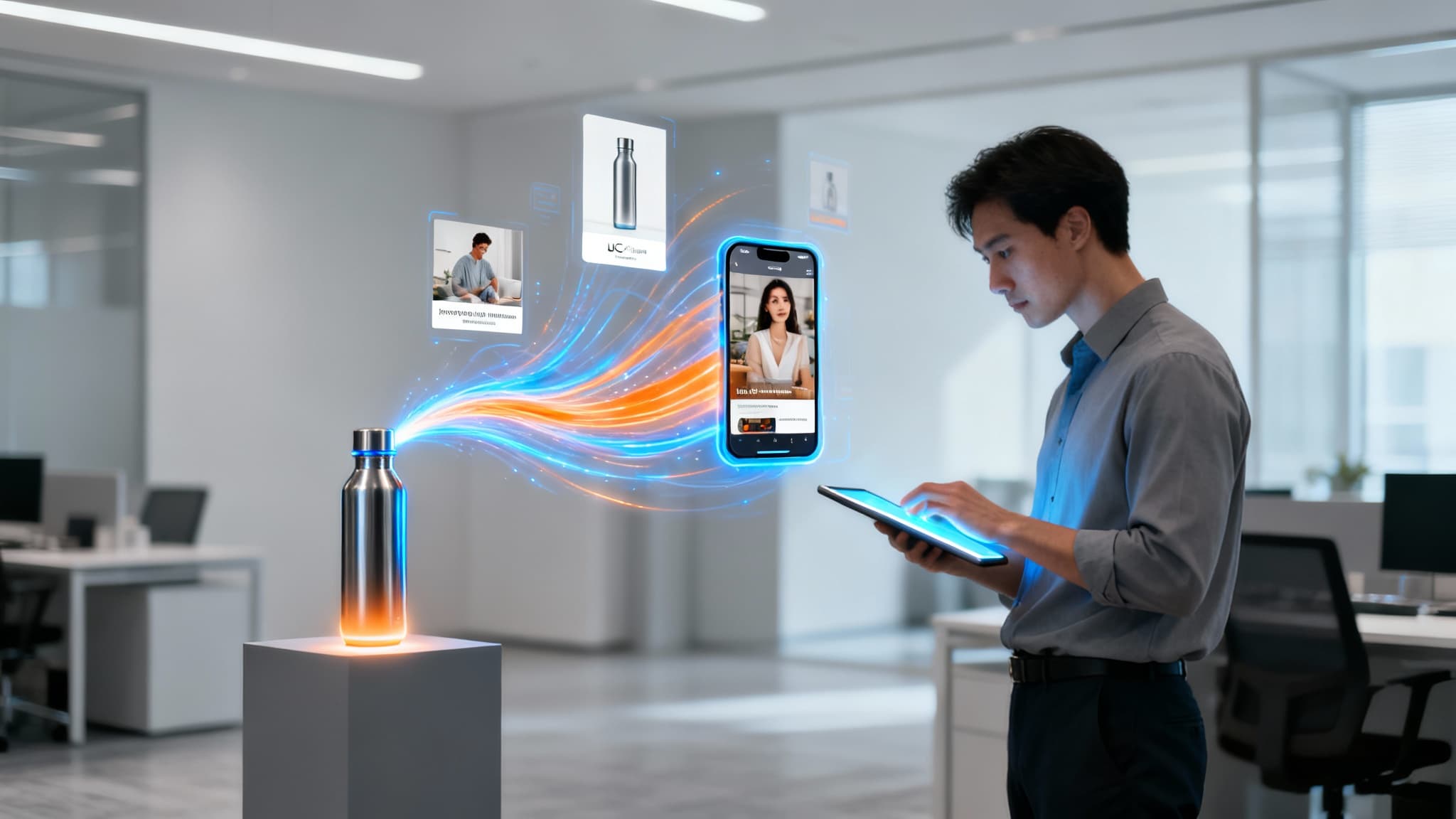The AI SEO Workflow: How to Scale High-Trust UGC and Visuals for Google’s New Rules
Shehroz

The AI SEO Workflow: How to Scale High-Trust UGC and Visuals for Google’s New Rules
If you’re feeling the pressure from Google’s new AI-powered search, you’re not alone. The old SEO playbook is being rewritten, and the demand for a constant stream of high-trust, authentic visual content has never been higher. But how do you scale production without scaling your budget into oblivion? This article will break down why traditional creative workflows are failing and introduce a new playbook: the AI SEO workflow. You will learn a step-by-step model to generate the exact product visuals and UGC-style content that builds trust, satisfies Google, and drives results—all with unprecedented speed and efficiency.

The Core Conflict: Why Traditional Creative Production Can’t Keep Up with AI-Powered Search
For years, a quarterly photoshoot was enough. You’d spend weeks planning, a day shooting, and weeks in post-production to get a batch of polished assets. That model is now fundamentally broken. The conflict lies in a massive mismatch of speed, scale, and cost.
AI-driven search engines like Google are becoming visual-first answer machines. They reward brands that provide a rich, diverse, and constantly refreshed catalog of images and videos. They want to see your product in every context, used by every type of person, from every conceivable angle.
Your traditional creative process, with its high costs, logistical headaches, and weeks-long lead times, simply can’t produce content at the velocity search engines now demand. You’re forced to reuse the same aging assets, leading to creative fatigue for your audience and signaling content stagnancy to Google.
The bottom line: while algorithms now operate in milliseconds, your creative pipeline is still stuck moving at the speed of booking studios and shipping products. This gap is where your competitors are gaining an edge.
What ‘High-Trust’ Content Really Means in 2025 (And Why It’s So Hard to Source)
The term “high-quality content” has been replaced by a new, more important metric: “high-trust” content. Trust is the currency of the modern web, and it’s earned through visuals that feel genuine and relatable. But what does that actually mean?
High-trust content isn’t just about high resolution. It’s about fulfilling four key criteria:
- Authenticity: It looks real, not like a slick, overproduced stock photo. It mirrors the lo-fi aesthetic of user-generated content (UGC) that dominates social media.
- Relevance: The visual is contextually perfect for the user’s needs. If someone is searching for a hiking backpack, they want to see it on a trail, not on a sterile white background.
- Diversity & Inclusivity: It showcases a wide range of people, environments, and use cases, allowing more potential customers to see themselves using your product.
- Freshness: The content feels current. Seeing the same hero image for six months erodes trust and suggests your brand isn’t dynamic or innovative.
Sourcing this content manually is a logistical nightmare. It involves endless influencer outreach, inconsistent quality from actual customers, and the immense challenge of directing a photoshoot to look perfectly *imperfect*. It’s a slow, expensive, and unpredictable process.
The Manual Method: A Framework for Auditing Your Visuals for SEO Gaps
Before you can fix the problem, you have to understand its scale. Most brand and e-commerce managers are trapped in a reactive cycle of auditing their visual gaps—a process that highlights just how broken the old model is. Does this look familiar?
- Step 1: The Product Page Review. You manually click through your top product pages, realizing many have only two professional shots against a white background, failing to show the product in a real-life context.
- Step 2: The Social Ad Graveyard. You scroll through your ad library and see the same three UGC videos from six months ago, with performance metrics clearly showing audience fatigue.
- Step 3: The Competitor Anxiety Check. You browse a competitor’s site and see they have fresh, seasonal lifestyle shots and new video testimonials, making your own assets look dated by comparison.
- Step 4: The ‘Massive Brief’ Bottleneck. You consolidate all these gaps into a huge, complicated creative brief for a new photoshoot that is already over budget and won’t deliver assets for another two months.
This manual, reactive workflow guarantees you’re always playing catch-up. You’re patching holes in your content strategy instead of proactively building a library of high-trust visuals.
Introducing the AI SEO Workflow: A New Model for Agile Creative Production
What if you could decouple content creation from the physical limitations of studios, cameras, and models? That’s the promise of the AI SEO workflow. It’s a new paradigm for producing high-trust visuals that is proactive, infinitely scalable, and built for the speed of modern marketing.
This workflow leverages generative AI to act as your virtual photo studio and on-demand content team. Instead of commissioning a photoshoot for 20 assets, you can generate 2,000 unique, on-brand assets in the time it takes to write a creative brief. It transforms creative production from a capital-intensive project into a flexible, operational task.
This isn’t about replacing human creativity; it’s about augmenting it. It empowers you to execute your creative vision instantly, test unlimited variations, and finally create enough content to meet the demands of every channel, from Google Discover to TikTok ads.
Step 1: Generate Infinite, On-Brand Product Shots Optimized for Visual Search
The foundation of e-commerce is the product shot. But today, a single shot on a white background is not enough. You need lifestyle shots, in-context shots, and seasonal shots to rank in visual search and convert customers.
With an AI content generation platform, you simply upload a clean image of your product. From there, you can use text prompts to place it in any scene imaginable. “A reusable coffee cup on a desk in a sunlit home office,” or “skincare product on a marble vanity next to a monstera plant.”
The result is an endless supply of unique, high-resolution product photos. You can create a dozen different scenes for a single SKU, A/B test which backgrounds drive the most engagement on your product pages, and generate fresh assets for every holiday campaign without a single reshoot.
Step 2: Create Authentic, On-Demand UGC-Style Videos to Build Trust at Scale
Video is the ultimate trust-builder, but authentic UGC is notoriously difficult to source and scale. Coordinating with creators, shipping products, and hoping for good results is inefficient and expensive.
Generative AI tools are changing this dynamic entirely. You can now generate authentic, UGC-style videos in minutes. By providing a simple script, these platforms can create realistic “creator” videos featuring AI-generated spokespeople that are perfectly matched to your target demographics.
Imagine creating 10 different video ads for 10 different audience segments in a single afternoon. You can test different hooks, calls to action, and “creators” to see what resonates most, all without the logistical burden of a traditional video shoot. This allows you to deploy highly relevant, trust-building video content across your product pages, social channels, and ad campaigns at a scale that was previously impossible.
Step 3: Test, Learn, and Redeploy Creatives with Unprecedented Speed
The true power of the AI SEO workflow lies in the feedback loop it creates. When content generation is virtually instantaneous and free, you can adopt a true test-and-learn mentality.
Instead of guessing which creative will perform best, you can generate dozens of variations and let the data decide. Test which product background improves add-to-cart rates. See which UGC-style video drives the lowest cost-per-acquisition. Identify the visual elements that improve key SEO metrics like dwell time and click-through rate.
This agile approach closes the gap between creative strategy and performance marketing. You can quickly double down on winning concepts and eliminate underperforming visuals, continuously optimizing your entire library of assets for maximum impact and ROI.
What to Look for in an AI Content Generation Platform
As you explore this new frontier, it’s critical to choose a platform that empowers your brand, rather than complicates your workflow. Not all AI tools are created equal. Here are the key features to look for:
- Ease of Use: The platform should be intuitive for marketers, not just AI engineers. You should be able to go from idea to final asset in minutes.
- Brand Consistency: Look for features that allow you to maintain brand integrity, such as locking in specific models, backgrounds, or product angles to ensure a consistent look and feel.
- Commercial Safety & Originality: Ensure the platform generates 100% new, original assets that are fully licensed for commercial use, protecting you from any copyright issues.
- Professional-Grade Quality: The final photos and videos should be high-resolution and indistinguishable from a real, professional shoot.
- True Scalability: The right solution should not limit your creativity. It should provide the capacity to generate the volume of content you need to fuel every marketing channel.
The old creative workflow is a bottleneck that is costing you traffic, conversions, and market share. Embracing an AI SEO workflow isn’t just an option—it’s becoming essential for survival and growth in the new era of search.
Ready to escape the endless cycle of expensive photoshoots and slow production? Platforms like Slaptastic are pioneering this new workflow, giving brands the power to create stunning, high-trust visuals on demand. Explore how an AI content generation solution can transform your SEO strategy and help you win in the new era of search.



